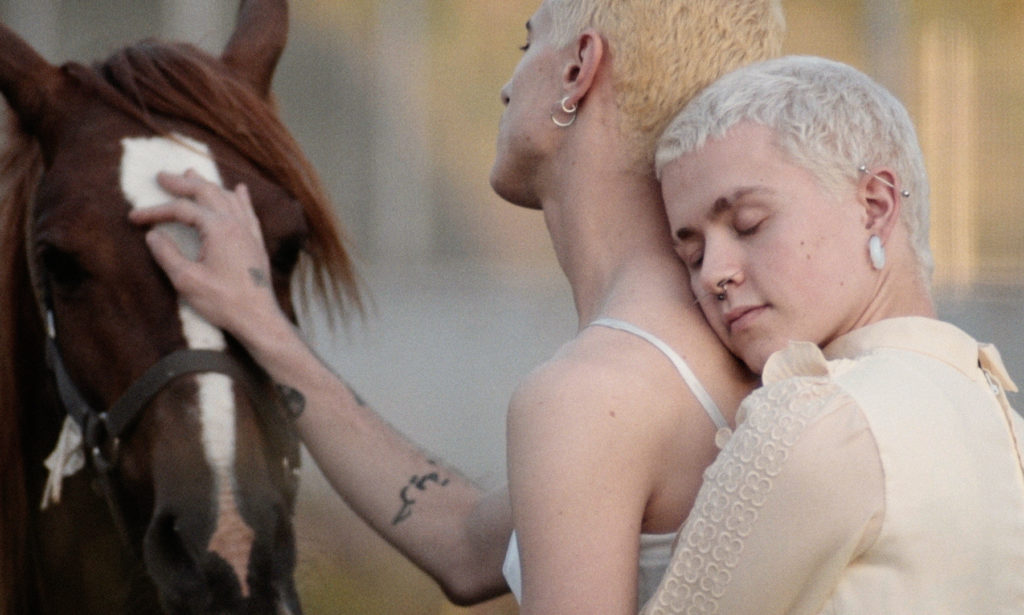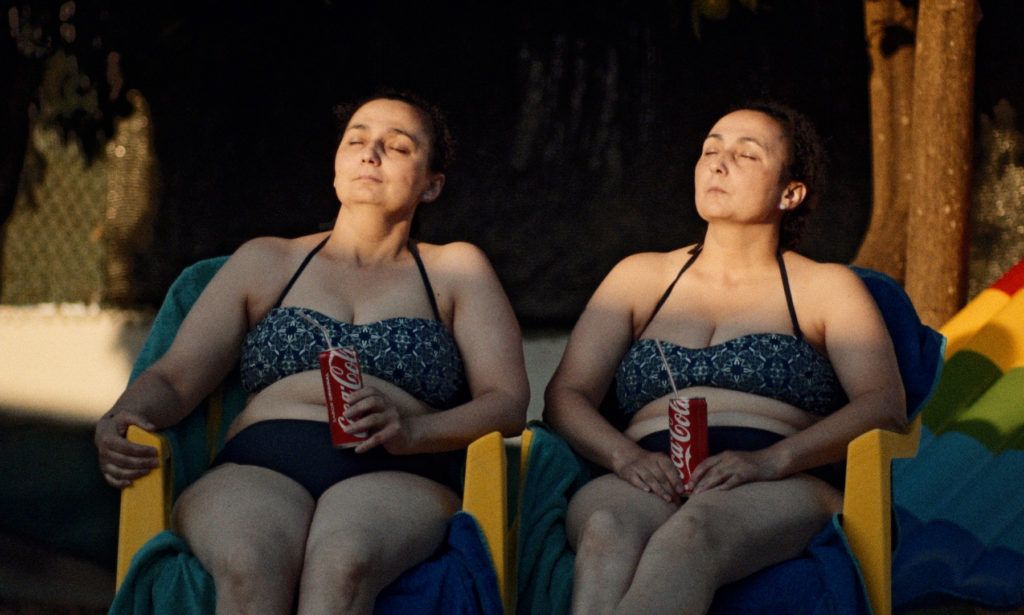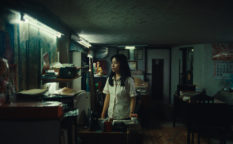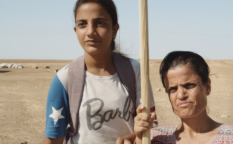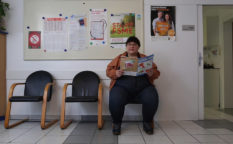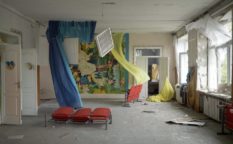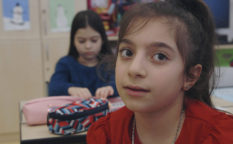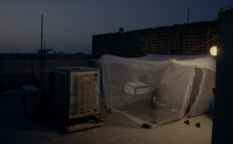Review: Amor Fati (2020)
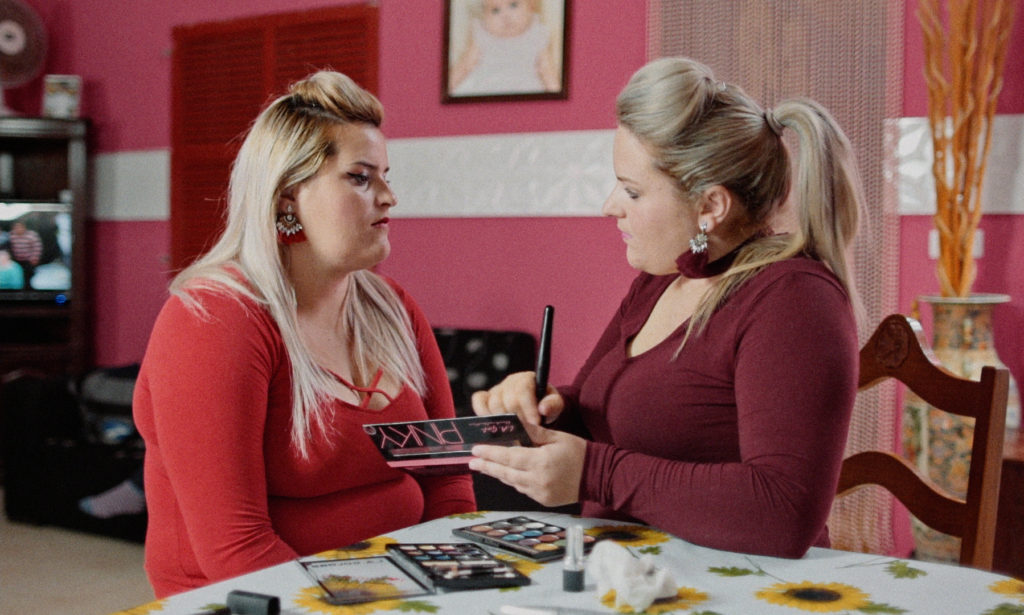
Destined love – what sounds like a romanticized concept comes in several shapes and sizes. That is, if you watch Amor Fati, by Portuguese artist Cláudia Varejão. The Swiss-French-Portuguese co-production, named for this enigmatic love, had its world premiere in the International Feature Film Competition at Visions du Réel.
Inspired by Aristophanes’ speech in Plato’s’ Symposium, in which the poet postulates that human bodies had been split by the Greek god Zeus into two halves and therefore keep searching for one another, Varejão set out to show examples of those who had already concluded this journey. Traveling around Portugal for two years, she captured the stories of old souls, new bonds being formed, and unconventional connections. A mosaic of couples, friends, families and pets, and their owners.
Varejão’s observations are rooted in a world that on the one hand is grounded in its day-to-day realities, on the other carries itself with an allusion to poetic otherworldly landscapes. Living a quiet life in a tucked-away mountain town, the friendship of two elderly women, Ana and Lucinda, seems like something captured out of a painting. Whispering to each other from behind their black headscarves at the window, eating dinner in the light of their wooden oven or sleeping in beds facing each other is only half the story. The long glance into their faces, a weathered mountain range whose crevasses cut deep wrinkly valleys into the skin, both so different yet so similar, ascends the ordinary to the particular.
For others, love is generational. Young Samira lives with her family, including the pregnant Antônia, in what seems to be an poor outer district. She spends her days watching TV, cleaning, and listening to Antônia’s life lessons. “You can’t date white guys and you can’t show yourself to them in a swimming suit”, the elder one explains during a quiet minute at a pompous wedding. Samira, all dressed up, spotting a pretty make-up Antônia applied for her a scene earlier, nods affirmatively.
Ringo and his mother unfold a similar dynamic. The young blind man may be capable of navigating his daily himself. In fact, there seems to be a common argument if he should be dropped off at sports practice by car or go there himself. But ultimately, there is a special warmth to their moments together. The trip to the favorite football team’s game, dance classes, or even the art gallery. Ringo’s visual limitations do not matter, the companionship transcends any obstacles.
It is therefore poignant that he, the visually impaired, provides the setup for one of the peculiarities of “amor fati”. “They say that the faces of those who love each other tend to become similar over time”, he reads out loud from a text. Varejão happily obliges with examples. There are Nix and his partner, their blond-dyed hair, tattoos, and piercings a visual echo of each other. We see them putting on dresses for photoshoots and dancing in fogged techno clubs.
Identical twins Margarida and Alzira have such a strong bond, they spent their every waking minute together – waiting tables at a restaurant, watching telenovelas, football or sorting their stuffed animals. Their mental intimacy manifests itself in the always matching outfits and the merging of their movements. One holds the phone, the other swipes. Even the fortune teller confirms they will never be separated for long. As Aristophanes said, two separated halves will always come looking for each other.
But the movie does not only make its case with human love. There is a family of musicians, connected by their love of music, the elder ones passing on their skill to the younger ones. Simão and his new puppy Gianni bond as they watch TV together, as he baths him and Gianni processes from biting to starting to sleep on Simão’s face.
Varejão captures these relationships with an aptitude for artistic stylized pictures. There is unhinged intimacy to her gaze, a peek into the infinite corners of the human soul. Likewise, the framing. The stone house village of Ana and Lucinda with its brittle walls and dreamy moon atop the roofs, the lush green thicket, and clearings when showing an old hermit living with his horse in a cabin – they carry the air of a fairytale, of wondrous worlds willfully exposing themselves to the camera.
Varejão opts for working with a large aperture, giving a distinctive bokeh to the pictures she captures. Her characters are crisp clear, everything around them fades into hazy obscurity. The movie playfully connects its story arcs through match cuts or overlapping diegesis. From Ringo in the stadium we jump to the twins listening to the online broadcast of the game, from Ana and Lucinda to a painting of sisterly nuns in a gallery.
With all her love for artistic expression, Varejão’s commitment to it too often puts the movie unfavorably into the “style over substance” corner. Her storytelling, vast with characters and a wide array of unaccounted sequences can get confusing and lacking in narrative. As a viewer, you wonder why she keeps intercutting her footage with 90s home videos of two young sisters. You do not meet present-day Teresa and Inês until the end of the movie as they reminisce their youth, but that nod comes too late.
Similarly, she introduces a bunch of new characters 86 minutes into the movie, with the whole documentary clocking in at 102 minutes. These people are glimpses of other stories she filmed and work as mirror images to the established protagonists. More similar-looking twins, dog owners, generational love between a grandma and a grandson – it seems as if Varejão wanted to make a point about their universal validity. But it is not needed.
What the movie succeeds at though is coming full circle. One destined love will be lost, another one obtained. As one dies, the love never forgotten, a newborn will trigger it anew. Love is unique. And it is forever shifting with us as we seek and capture it.
Direction and Photography: Cláudia Varejão
Sound: Cláudia Varejão, Takashi Sugimoto & Adriana Bolito
Editing: João Braz Cláudia Varejão
Sound Editing: Elsa Ferreira
Sound Design: Daniel Almada, Elsa Ferreira
Re–Recording Mix: Hugo Leitão, Daniel Almada
Color Correction: Paulo Américo
Design: Ilhas
Production: Terratreme Filmes
Co–Production: Mira Film, La Belle Affaire
Producers: João Matos, Vadim Jendreyko & Jérôme Blesson

